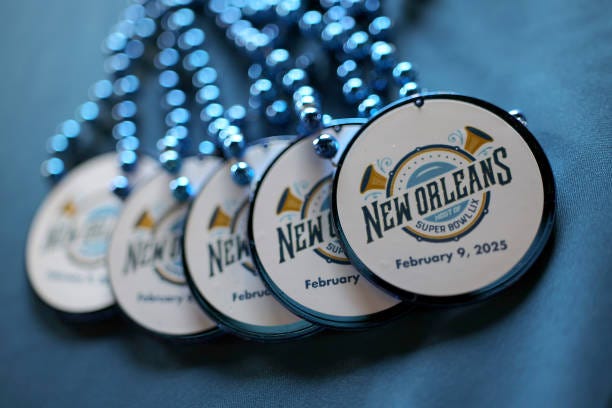
Murals are springing up on the Civil Courthouse and Girod Street. Streets are being repaved and restriped. Piles of junk are being cleared from interstate underpasses. Sidewalks on Camp and Royal Street are being repaired.
As Michel Hecht, President and CEO of Greater New Orleans Inc. (GNO) called it on the Newell Normand show Wednesday, “Full frontal economic development” has come to New Orleans.
Even the city's greatest blights are receiving love.
“We're doing a massive 70-foot-high Becky Fos (mural) that's going on the Plaza Tower building,” Hecht explains. “It's going to be like a big, printed industrial Spanx on the building, holding it all in, slimming and beautifying.”
Hecht says that with thousands of journalists, the NFL’s massive organization, and hordes of football fans trickling into our fair city, the Super Bowl is somewhat of a miniature Olympics.
The game itself lasts only 4-5 hours, but the fanfare starts the week leading up to the event. When it's all said and done, the event attracts more than double the number of people that can fit in the Superdome.
GNO has taken a large role in organizing the city-wide cleanup before guests arrive. But they’ve also worked in lock-step with the city and Joe Threat. Threat is the Deputy Chief Administrative Officer/ Infrastructure and Chief Resilience Officer for the City of New Orleans, who’s been responsible for managing over 200+ projects leading up to the Super Bowl.
When it comes to execution, a continuing theme on the Newell Normand show, Threat walks the walk. Newell spoke with both Hecht and Threat about the recent developments, and how Threat has dealt with 80+ of New Orleans’ major stakeholders to execute.
“The city looks different,” Threat explains. “I’m really impressed and honored to work with these professionals…We want to host another Super Bowl, so this gives us incentive to move forward.”
Threat got into the more gritty details of what’s occurred on the front lines of preparing the city.
Threat said, “We’ve run into every conflict you can imagine, this being a 300+-year-old city… On Canal, Iberville, and Burgundy, we ran into 5 or 6 water conflicts with valves that needed to be totally replaced. We had to collaborate with the S&W Board, utilities, Entergy, AT&T, and the RTA to reroute the Streetcar line… There’s a lot more going into these projects than you imagine, but we’re at work right now.”
Of course, anyone can critique what they see, but it’s Threat’s crews that have to deal with the infrastructure that lives under the city, something that he calls his, “Worst nightmare.”
Threat says, “We live in one of the oldest cities in the United States and you see things you have never seen before. We’ve dug up wooden pipes, terracotta pipes… I wish we had another 2 or 3 billion dollars to handle the whole city. When we dig up the city, we’ve run into some major challenges. So it’s really scary when you bring out that excavator to open up the street.”
Overall, the Super Bowl readiness program has kicked many action-oriented people into high gear, and Hecht explains, “What Joe has done is create an environment that creates positive pressure… But it also creates coordination and a culture of getting things done.”
The best part? They don’t plan to stop after the final buzzer of Superbowl LIX sounds. Threat says, “Once you hold people accountable to accomplishing a mission, it gives them pride…I’m going to take this group right into Mardi Gras. We’re going to take a week’s break after the game then go deliberate planning for Carnival… This is something we should be doing for Jazz Fest, French Quarter Fest, any major event, or hurricane planning… We all need to keep a battle rhythm going so we can come together, execute, and make things happen.”
That’s what’s going on right now, but I spoke with Collin Arnold as well, who explained a bit more about what we can expect for Mardi Gras. And the biggest surprise from our interview is that there will be fewer surprises than anticipated.
News has already broke that there are to be no changes to parade routes, even though there has never been a SEAR-1 rating given to an event that’s the size, length, and scale of Mardi Gras.
Arnold summarized the changes to Mardi Gras as follows:
“Over the next three weeks, you'll see security get tighter and tighter… Like what you saw happen for Sugar Bowl… There’ll be enhanced physical security measures in the in the French Quarter—particularly around Bourbon Street.”
“Over the next three weeks, you'll see security get tighter and tighter… Like what you saw happen for Sugar Bowl… There’ll be enhanced physical security measures in the in the French Quarter—particularly around Bourbon Street.”
“You'll see different types of barricades out there,” said Arnold. “A lot of these are being tested for what works for the NOPD. But to your question directly, I don't think there is a whole lot we're going to change about Mardi Gras, because I don't think the public wants that.”
